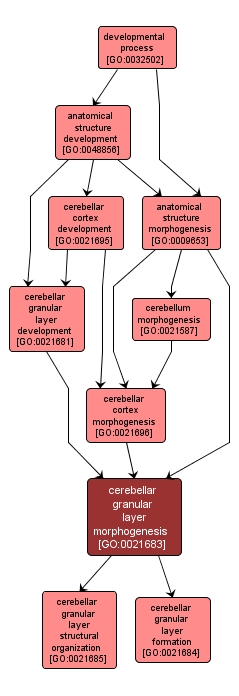| Desc: |
The process by which the anatomical structure of the cerebellar granular layer is generated and organized. Morphogenesis pertains to the creation of form. The granular layer is the innermost layer of the cerebellar cortex. This layer contains densely packed small neurons, mostly granule cells. Some Golgi cells are found at the outer border. Granule neurons send parallel fibers to the upper molecular layer, where they synapse with Purkinje cell dendrites. Mossy fibers from the pontine nuclei in the white matter synapse with granule cell axons, Golgi cell axons and unipolar brush interneuron axons at cerebellar glomeruli in the granule cell layer. |














